If you want to learn more about easy waist high planter box plans you have to take a close look over the free plans in the article. I have designed this super simple raised planter box, so you can finally start that small vegetable garden right on your patio. This planter requires a small investment in time and money. This design is perfect for elderly persons. More garden projects HERE.
If you want to get the job done in a professional manner, we recommend you to plan everything with attention, as to prevent costly mistakes and to build a professional garden project. Invest in high quality materials, such as cedar, pine or redwood, as the structure will be exposed to all kinds of weather. Apply a few coats of paint over the components, to enhance their appearance and to protect them from bad weather.
Easy Waist High Planter Box – Free DIY Plans
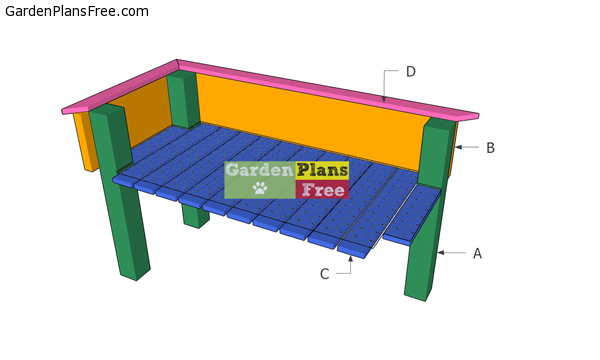
Building-s-waist-high-planter-box
Materials
- A – 4 pieces of 4×4 lumber – 30″ long LEGS
- B – 2 pieces of 2×10 lumber – 24″ long, 2 pieces – 48″ long BOX
- C – 3 pieces of 1×4 lumber – 14″ long, 10 pieces – 24″ long BOTTOM
- D – 2 pieces of 1×3 lumber – 53″ long, 2 pieces – 26″ long Trims
- 1 piece of 4×4 lumber – 10 ft
- 1 piece of 2×10 lumber – 12 ft
- 2 pieces of 1×3 lumber – 8 ft
- 3 pieces of 1×4 lumber – 8 ft
- 2 1/2″ screws
- 1 5/8″ screws
- 2″ nails
- wood glue, stain/paint (for base)
- hardware mesh
- soil
Tools
- Hammer, Tape measure, Carpentry square
- Miter saw, Drill machinery, Screwdriver, Sander, Router
- Safety Gloves, Safety Glasses, Respiratory Mask
Time
- One day
How to build a waist high planter box
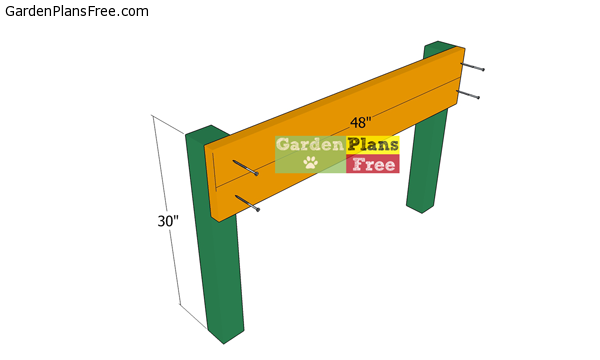
Assembling-the-sides-for-the-box
The first step of the project is to build the sides for the garden planter. Use 4×4 lumber for the legs and 2×10 lumber for the planter box. Cut all components at the dimensions shown in the diagram and lay everything on a level surface. Align the slats to the top of the posts and align the edges flush. Drill pilot holes and insert 2 1/2″ screws to lock the slats into place.

Assembling the frame of the planter box
Next, attach the 2x10s to the planter box. Align the edges flush and make sure the corners are square. Add glue to the joints. Drill pilot holes and insert 2 1/2″ screws to lock them into place tightly.
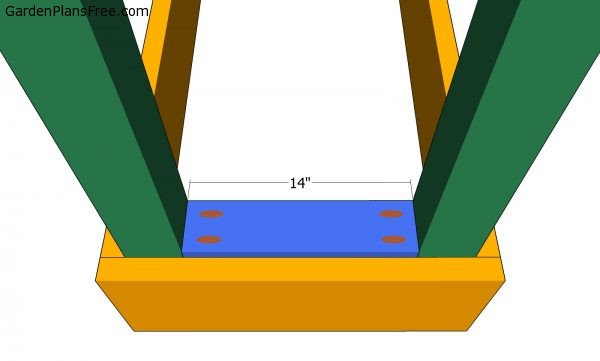
Bottom end slats
Next, you need to attach the 1×4 slats to the bottom of the planter box. Drill pocket holes at both ends of the slats and then insert 1 5/8″ screws to lock them to the posts. Leave no gaps between the components.
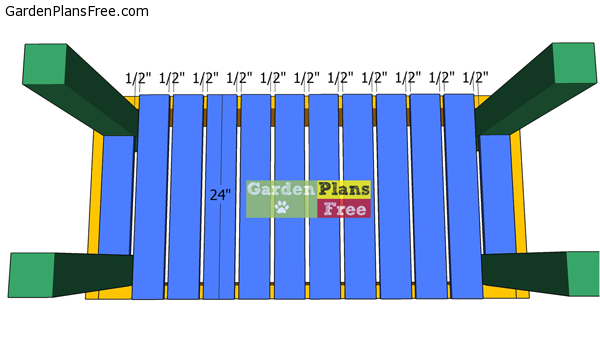
Fitting-the-bottom-slats
Fit the rest of the 1×4 slats to the bottom of the planter box. Fit a piece of 1/2″ plywood between the slats to create even gaps. Drill pilot holes and insert 2 1/2″ screws to lock them to the waist high planter box.

Fitting the hardware cloth
Next, you need to add hardware mesh to the interior of the planter box. The mesh will hold the soil together and also help with drainage. You can also staple landscape fabric inside the elevated planter to protect the components from the elements.
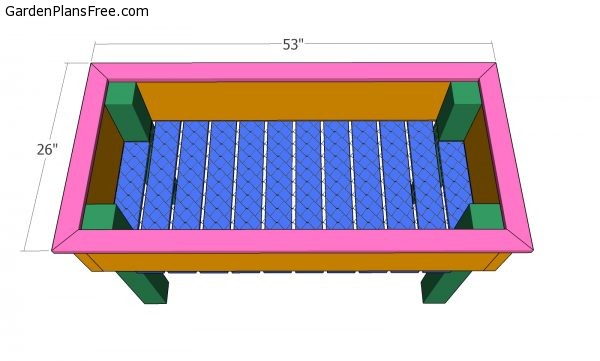
Top trims for raised planter box
Use 1×3 slats for the top trims. Make 45 degree cuts at both ends of the trims and lock them into place with glue and 2″ nails. Leave no gaps between the trims.
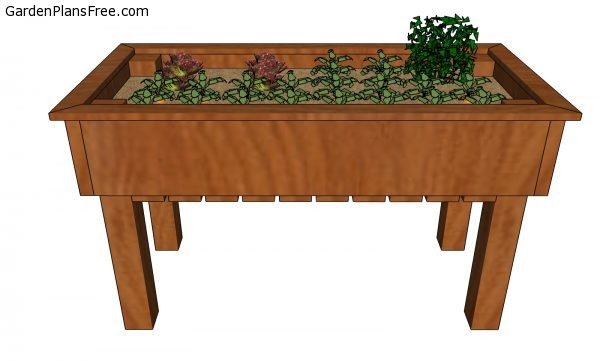
How to build an easy waist high planter
This is an extremely sturdy planter that you can build with a few basic tools. While this is not large enough for a proper garden, it is still a very good start to learning how to grow vegetables on your patio. In addition, this helps with your back, as you don’t have to get down to your knees and take care of the plants.
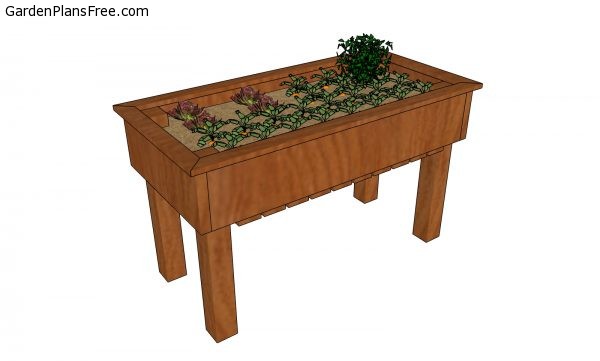
Easy elevated planter box plans
I recommend you to check if the components are locked into place properly and structure is rigid enough for your garden. Make sure there are no protruding screws or sharp edges. Fill the holes with wood putty and then smooth the surface with sandpaper. Fill the planter with soil and then plant the vegetables.
PRO TIP: Apply several coats of paint or stain over the components, in order to protect them from decay. Check out the rest of the project to learn more about building garden planters.


1 comment
thank you, made it easy